Welcome one and all to the beginning of the Spring 2020 season, and the first Tower of God post! This week we get into the story proper as Bam meets his crew, we get a small info dump, and the tests begin. Lets dive in!
Starting off, let’s talk about the art and animation. I mentioned it a little in the initial impressions post, but I actually really like Tower of God’s art style. The lines are inconsistent, fading in and out, though they are bit thinner than i’d like. However I still find it preferable to the almost to clean and perfect linework of most anime. Even though its produced digitally, it gives a very handmade feel to the whole production that pairs well with the effects work. In a way, Tower of God’s production is very similar to Mob Psycho 100’s, in that it tries to mimic the original author’s style. Similar to Mob Psycho this looser style should, in theory, give it more freedom when animating. So far though we haven’t really seen that, as Tower of God has been rather inconsistent. I can only hope it improves moving forward.
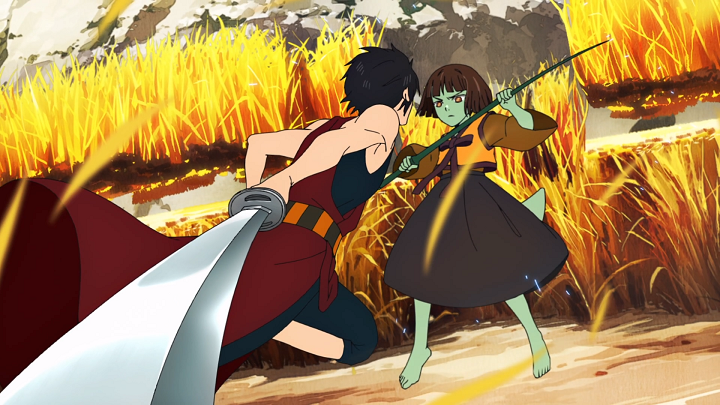
As far as the actual episode content goes, Tower of God did a lot this week. Introducing and expanding on its three leading characters, the world and Bam’s ultimate end goal. All the while hinting at plots and problems to come. In regards to the characters, we finally meet Khun and Rak properly. I think Tower of God did a fine job here, portraying both their attitudes and philosophies in life. For instance we see early on that Khun is not one for rules or being controlled. Seeking out allies who don’t just mindlessly follow the Administrators orders to kill, bartering and sneaking his way through. Meanwhile Rak, for all his size and strength, is shown basically as an unruly child in search of people/toys. While it’s nothing complex, I think Telecom did a good enough job here with their banter, and I look forward to what’s to come.
That said I can completely understand if others don’t enjoy them. It’s a pretty stereotypical trio all things considered, and Rak is hardly the most unique of personalities. All I can really say though, as a webtoon reader, is that he grows on you eventually. We saw a bit of this week, but for all his bluster, Rak becomes one of the primary comedic elements of Tower of God. Often acting as the butt to other people’s jokes. He is hardly alone in that role either, as we meet a number of Tower of God’s side cast as well. From the troll Shibisu to the stoic and moody Hatz and Anaak. I criticize Tower of God for a lot of things in its writing, but it’s colorful cast of characters is not one of them. This early on, I actually think it’s one of the shows strongest points.
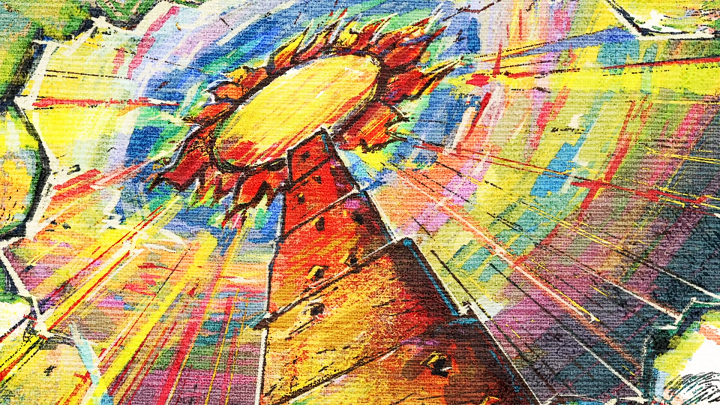
Beyond that, we also got a minor info dump on the world from the Ranker Lero Ro. Right off the bat I have to say, I wasn’t expecting Overhaul’s voice actor here. Just not what I imagined in my head, but it works. Beyond that though I want to talk about Shinsu, because Tower of God didn’t do a great job explaining it here. First up, water is such a weird translation/depiction of it. It’s not wrong, but the best way for you to think about it is more like… divine water. Because Shinsu is effectively Tower of God’s magic system, and is in no way limited to just “water”. We will see more of it later on, but for now, think of it like its everywhere, permeating everything. And the higher up you go, the thicker it gets. Meaning more is available to use, but it’s harder.
Moving on from Shinsu, we come to one of Tower of God’s primary themes/focuses, luck. Luck, or birth or innate talent, these are all core aspects of Tower of God and inform basically every character in this first season. We see some of it with Bam and the Irregular title. With Lero Ro telling us they are born outside the tower, they are not subject to its rules, and how all previous Irregulars have been incredibly powerful. As we have seen, that doesn’t fit Bam at all, but we have started to get glimpses of it. As for the rest of our cast, we saw hints to them as well. Such as how Anaak, the lizard girl, bears a weapon similar to Black March, with Jahad’s family crest on it. There were other hints for characters like Khun as well, but I don’t want to spoil those reveals.
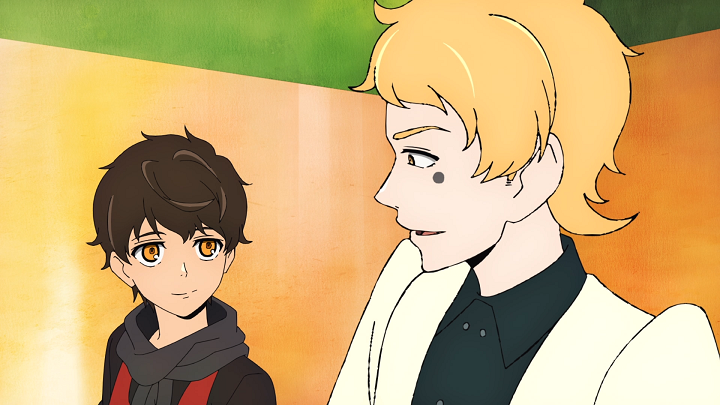
Finally, with the characters and world out of the way, I want to talk about changes. Changes that Telecom Animation and Director Takashi Sano made to the original work, for the better. Because to me, these changes are a really good sign. They show that the staff understand the work, and want to properly adapt it rather than just doing a pure 1:1 adaptation. Taking into accounts its flaws and doing their best to mitigate those while showing off its strengths. For me, as a webtoon reader, this actually makes me hopeful for future episodes. The big example of that this week is the sniper, Levin. His role in the original was very different, as originally it was a completely new random person who got Lero Ro’s “lesson”. And while this no doubt costs him his original future role in the story, I think it’s for the best.
What I mean is that originally, he became a minor recurring character. He never really added much of substance and just sort of existed for combat-focused gags. But here, Tower of God has changed him into a slightly more impactful character. Introducing him, giving us snippets of his journey, before swatting him back down to reality. Had this been just another random person, I don’t think it would land as well. Because while we barely knew Levin, the fact is we did know him. He had already interacted with our leads and we knew his face. So while it’s very minor, a very small addition to the scene, I think the scene is better for it. I know some readers will disagree, that Telecom should adapt its works faithfully with no changes. But if I just wanted a carbon copy… I would just read the original.
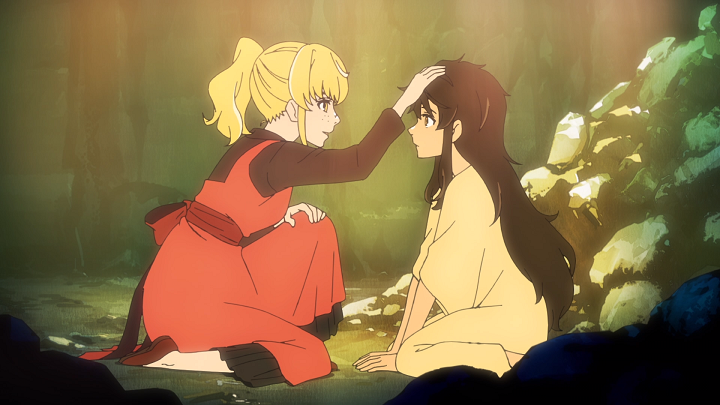
So all in all, how was this second episode of Tower of God? Well, it was pretty sketchy. In terms of production there were some hiccups. Some awkward and floaty scenes, similar to Yuri’s kick in the first episode. But at the same time a lot of the physical comedy, like Shibisu’s face or the girl running into the wall worked well. And I think that the chibi versions of Rak and co fit in nicely with the rough line work. Meanwhile the pacing has really picked up and there were some good, though unexpected, modifications to parts of the work. Giving me hope for a lot of the narrative issues I was expecting to crop up. I don’t think they will be able to fix all of them of course. They are to ingrained in the story. But I think they can at least make it worth watching.

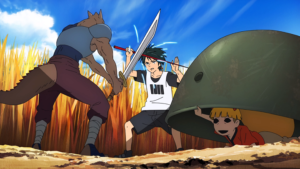
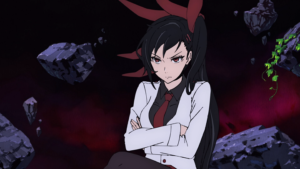
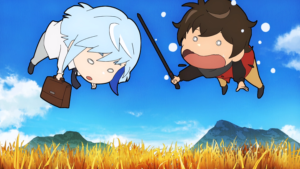
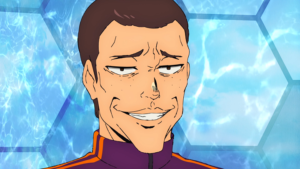
I’m going to show up and complain on each of these episode posts….or that was the plan, but ep 2 really wasn’t bad as the first in my opinion. I think the fields of grain setting worked a bit better than the awkward fishtank in a should-have-been spooky room. I was interested by the test – the side characters have good personalities and group dynamics. Also, the action was quite decent. My complaint is with the Ranker telling, not showing – but it’s really a minor gripe overall. Just kind of felt like the show found its feet after round 1. Maybe this will show be good, after all!
Im just gonna say Lenlo: 1, Amun: 0. Lets see how many episodes we go before that reverses
I’m actually really liking this show. I didn’t expect to, and the budget could be better, but overall it’s a fun little series so far.
>Because Shinsu is effectively Tower of God’s magic system, and is in no way limited to just “water”. We will see more of it later on, but for now, think of it like its everywhere, permeating everything. And the higher up you go, the thicker it gets. Meaning more is available to use, but it’s harder.
I’m not sure I get this. So it’s kind of like air? It’s there, but usually invisible? And you can use it to do magic by channeling the Shinsu in the air? If that’s the case it kind of reminds me of the concept of Radiant’s “fantasia”: an energy in the air and nature (in varying amounts) that the characters could learn to harness to do magic spells.
Sorta? Air at least is a better metaphor than water. The way I always think of it is that its everywhere in everything. And as you go up there is more available to use, but that also means more bearing down on you. Sort of like how the deeper down in an ocean you go, the more the pressure builds.
It’s not terribly important to the story, its mostly just their magic system. But you remember the giant fish in episode 1? That fish was swimming in a cage of very high Shinsu. It was the amount of Shinsu in the cage that let it swim like it did. Yet Bam had no trouble breathing in it, because it wasn’t “water”.
The Radiant example works best, yeah.
Oops…Not sure why my comment below didn’t show up as a reply to your comment.
No worries, it can be weird sometimes. Im lookin into seeing if we can improve our comment system in the future.
Oh, so it only takes that water like form when there’s a lot of it in one spot? Interesting…Maybe this series is going to have more detailed world-building than I thought. Hopefully the anime doesn’t cut a lot of the world-building out then… I didn’t know that the giant fish from episode 1 was also in Shinsu! Thanks for clearing up things! Looking forward to the rest of your reviews!
It can actually take a wide variety of forms when it’s collected in one spot: a water-like shape is one of its most prominent manifestations, but it can also manifest as fire or electricity, for example. To quote the wiki:
“The flow of shinsoo determines its qualities, allowing it to appear as water, fire, light and other phenomena and materials. Shinsoo has no singular property or feature, and is rather the very basis of all energy and things within the Tower.” (https://towerofgod.fandom.com/wiki/Shinsoo)
So if I had to compare it to anything, I’d say it’s more fundamental than both water and air: it’s more like “matter”, in that it’s a substance that doesn’t have any particular features on its own but can be combined in a large variety of ways to create many different phenomena and materials.
And yeah, Tower of God has very detailed world-building: it’s one of its main strengths. The show has skipped some minor details (for example, in the webcomic the ranker mentioned famous irregulars from the past), but I’m sure the show will explain them once they become relevant.
Thanks for the info! Hmm, if that’s the case I may start reading the comic after the anime ends if I like the direction it’s going. Never read a manhwa before, but I love detailed world-building, although the huge amount of chapters out is kind of overwhelming and part of me wonders if the story goes downhill at some point, like a lot of long-running series. Still, it’s worth a try.
Thanks again!
The huge chapter count was a turn-off for me as well, and in my view the story – though still entertaining – has already kind of peaked in its first arc (which the anime will adapt). The first arc tells a relatively small and intimate story with a clear emotional hook, a likable cast (who can all shine in their own ways due to the multifaceted nature of the battles) and an interesting world. But although the world building keeps up throughout, after the first arc the story can be a bit meandering, often moving at a very slow pace without a clear sense of direction, especially during the frustratingly long “Hell Train arc” (I actually ended up skipping some parts of that arc, instead reading summaries on the wiki, because of how tired I got of it), and the battles aren’t as imaginative. Recently the story has picked up a bit again (for me, anyway) due to some interesting developments and an increased focus, and I do think it’s a fun series, but unless you’re a big fan I’m not sure it’s worth the investment.
If you do want to read more after the anime, though, it may be worth trying at least the second arc (the “Workshop Battle arc”). It’s pretty entertaining (even if it is much less compelling than the first arc) and (compared to the arc that follows it) not that long, so it’s a good way to see if the change in direction after the first arc suits your tastes.
By the way, Tower of God aside, there are some very good manhwa out there (from flashy action series like The Breaker and Peerless Dad to cute romcoms like Something About Us) so it’s definitely worth trying some of them, although they aren’t quite as wide and varied as manga.
I second pretty much all of this, especially The Breaker as a Manhwa suggestion. Its one of my favorites.
Thanks for the info & the manhwa recs! I guess I’ll wait until the anime finishes to see if I want to continue the series, especially if the story quality becomes that inconsistent. So far I’m finding the characters and world building fun. It’s kind of reminding me of Kimetsu no Yaiba so far, though hopefully the anime doesn’t go as downhill as that series did for me.
By the way, since you mentioned you like detailed world-building: another manhwa that may be worth checking out is Kubera. I personally couldn’t get into it (and even its fans agree that it starts off rather slow), but like Tower of God, it’s renowned for its vast world and extensive lore, and unlike Tower of God, it’s very character driven (if that’s your thing). Plus, it has a female MC who grows a lot over the story. And it’s available for free on Webtoons.